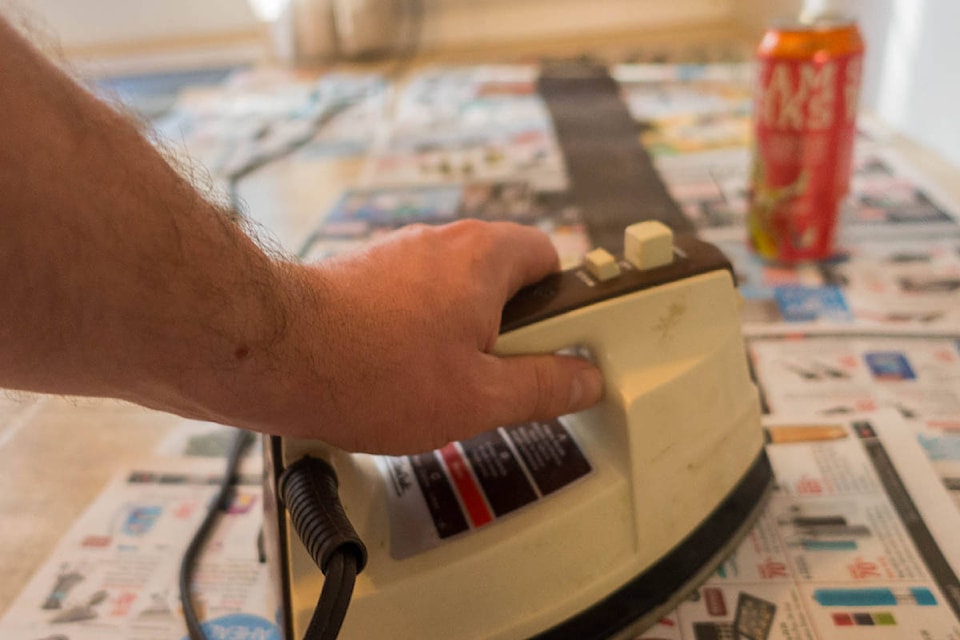Telling a prospective ski buddy that you can’t go skiing because you need to reglue your ski skins is like saying you can’t go on a date because you need to mend your underwear.
It’s embarrassing, but necessary.
Regluing skins is unpleasant. Everything becomes sticky, the house smells like burning, and it takes all day.
Ski skins are strips that attach to the bottom of skis to help ascend backcountry slopes. They are called skins because they resemble a sealskin, from which the first were made. Today, they are made from nylon or mohair and designed to let the ski slide forward but not backwards.
As the years pass I notice less and less of my friends bother to reglue skins. They usually just buy new ones, which are not cheap and can cost up to $300. By comparison, reglueing is between $10 to $50, depending on the method.
When my friends complain about not having extra funds, I can’t help but judge if they reglue their skins or not. I know time is money, but as a society we’re becoming more and more OK to spend money to avoid unpleasantness or time. Even if we can’t afford it.
The amount of debt held by Canadian households has been rising for roughly 30 years. By the end of last year, Canadian households owed just over $2 trillion. The average Canadian owes more than $22,000 in consumer debt, which doesn’t include any mortgages.
We’re beyond broke.
Sweden has taken an interesting approach in trying to tackle the problems of a “throw away culture”. A couple years ago, the Swedish government introduced tax breaks on repairs for anything from bicycles to washing machines. The incentives are part of a shift in government focus from reducing carbon emissions produced domestically to reducing emissions tied to goods produced elsewhere.
When it comes to ski skins it’s just the glue that needs to be replaced. Usually, the rest is fine. I’ve had my current pair for several years and they’ve traveled thousands of kilometres. And sure they look like they’ve been trampled by a herd of buffalo, but they still work.
Buying instead of fixing, usually requires more resources, materials, and energy. It can have a larger environmental impact.
Loss of habitat due to industrial development, forestry, agriculture and urbanization is one of the leading causes of global wildlife population decline.
According to a recent World Wildlife Fund report, global wildlife populations have declined by 60 per cent in just over 40 years. While most population declines are especially pronounced in the tropics, with South and Central America and the Caribbean suffering 89 per cent loss since 1970, in Canada some populations have declined more than 65 per cent.
The world is becoming empty.
Of course, reglueing skins alone isn’t going to save anything. The problem goes far beyond that. Even with recycling and waste management programs, the World Bank estimates by 2100, humans will be producing three times as much garbage as we do today. The amount of waste from cities alone today is enough to fill a line of trash trucks 5,000 km long every single day. We are becoming more consuming and wasteful.
It’s hard to change when our society is programmed to buy, use, and throw away. Not buy, use, and fix. Perhaps film composer John Powell was right, “To live fully, we must learn to use things and love people, and not love things and use people.”
However, change begins with a single step. Even if it’s tiny. I may reglue my skins, but I’m still a gear hoarder. I probably don’t need five pairs of skis, five tents, and several backpacks. I need to learn to live with less.
If we begin reusing, buying less and fixing more often than replacing, we can save money and perhaps reduce the amount of environmental degradation.
@pointypeak701
liam.harrap@revelstokereview.com
Like us on Facebook and follow us on Twitter.
